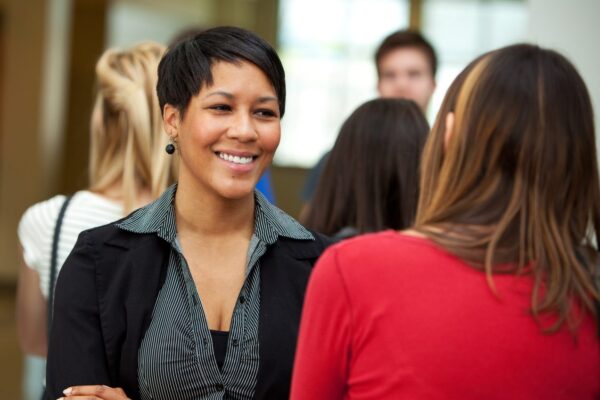I would argue that the question most likely to result in improvement of a school is, “My kids didn’t learn as much as your kids. What did you do?”
That simple question begins the process of allowing one teacher to learn what another teacher has often spent considerable time and trouble learning. That question leads to exposing expertise, learning from it, and spreading it.
This is what I have learned from more than a decade of studying “unexpected schools.” That’s what I call high-performing and rapidly improving schools with large populations of students of color and students who live in poverty—in other words, schools that are expected to be low performing but are not.
More than programs, more than technology, more than any of the endless fads that plague education, that simple question is what leads to kids learning more.
But in order for that conversation between teachers to happen, a whole lot of stuff needs to be in place that isn’t typically in traditionally organized schools.
Stuff like frequent, common assessments. Without common assessments, teachers can’t know how their students measure up against their colleagues’ students and can’t expose who has the expertise they need to learn from. When teachers can see that Ms. Smith’s kids understand how to find the slope of a line, while theirs are still struggling to plot points, naturally they are going to want to know how Ms. Smith teaches graphing to her students.
But common assessments require that teachers must have time to sit together to plan what they will teach when and how and when they will assess it, which in turn means they need a common set of standards and a scope-and-sequence of instruction and even a common curriculum.
One third-grade teacher can’t be teaching the narrative form through Charlotte’s Web while the teacher next door is teaching the difference between poetry, drama, fable and parable and the next one down the hall is having kids underline Time for Kids. With such variety, the teachers can’t see how their students are doing in comparison to their colleagues’.
This is an emotionally and politically fraught topic because, traditionally, teachers have prized autonomy over their ability to learn from colleagues. But the fact is that no individual teacher will ever be able to know enough about what their students need to know, how to teach it, and their students’ individual needs to be able to teach all things to all students every year. It is simply physically impossible. Traditional teacher autonomy inevitably means allowing some students to slip behind.
It is only possible to teach all children what they need to know when teachers share their knowledge and expertise with each other—and sometimes look outside the school to district, state, or even national sources of expertise. And that means asking that key question—“What did you do to make your students more successful than mine?”
Read More: How D.C. Schools are Revolutionizing Teaching]
There’s something else that essential question requires, and that is a culture of trust. Observing that another teachers’ students are doing better is seen in some schools as an admission of weakness rather than what it really is: a professional judgment that leads to collaboration and the spreading of expertise. When that question is scorned as demonstrating weakness, it will not be asked more than once.
Regular, scheduled time for collaboration, structured conversations, and a culture of trust—these are things that teachers working on their own have great difficulty establishing. These are things that are, rather, created and nurtured by school leaders, that is, principals who deeply understand excellent instruction and what it requires.
That is why study after study finds that school principals are the key to school improvement. It isn’t that excellent principals make all the instructional decisions in their schools. It is that they organize their schools in such a way that the teachers in their schools make better and better instructional decisions over time.
And by helping teachers work together in these ways—ways that lead to student success—they attract and retain a motivated, energized teaching force.
In my new book, Schools that Succeed, I profile Artesia High School in Los Angeles County, where 80 percent of students meet the qualifications for free and reduced-price meals and almost all are either Hispanic or African American.
In 2005 the school was chaotic and low performing. Sergio Garcia became principal then, and today just about all students graduate and go on to post-secondary education. Plus, the school outperforms the state in achievement. “Improving Artesia wasn’t rocket science. It wasn’t that difficult,” Garcia told me. Rather, he said, it was a matter of understanding the “deep need” teachers have to do their job well and building the systems to help them do it.
If we are serious about school improvement, we might want to listen to Garcia and other leaders of “unexpected schools.” They have hard-won expertise worth sharing.
Karin Chenoweth is author of Schools that Succeed: How Educators Marshal the Power of Systems for Improvement (Harvard Education Press, 2017) which profiles, among other schools, Artesia High School.

